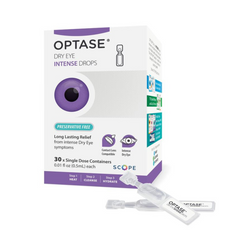The Hidden Impact of Phone Usage on Eye Health
There's no escaping it. Our phones, computers and tablets have become integral to our daily lives, serving as our main conduits for communication, work, and entertainment. However, this constant reliance on phone screens is silently taking a toll on our eye health. Our eyes, evolutionarily adapted for long vision, are now subjected to prolonged periods of short vision, leading to significant eye strain and discomfort.
Evolutionary Perspective on Vision
Historically, human vision evolved to support survival in wide, open environments. Our ancestors relied on long-distance vision to navigate terrains, spot potential predators, and locate resources. This natural predisposition for long vision means our eyes are more comfortable focusing on distant objects. In contrast, short vision—focusing on nearby objects for extended periods—is not what our eyes were primarily designed for.
The Shift to Short Vision
With the advent of smartphones and devices, our visual habits have drastically shifted. We spend countless hours staring at small screens held close to our faces. Some studies have shown the average person spends as much as 13 hours per day staring at multiple screens. This intense focus on near objects forces our eyes into a constant state of accommodation, where the eye muscles are strained to maintain a clear image. This condition, known as digital eye strain or computer vision syndrome, is becoming increasingly common.
Symptoms of Digital Eye Strain
Digital eye strain manifests through a variety of symptoms, including:
- Headaches: Prolonged screen time can lead to persistent headaches, particularly around the temples and eyes.
- Blurred Vision: Extended focus on close objects can make it difficult to shift focus to distant objects, resulting in temporary blurred vision.
- Dry Eyes: Reduced blinking rates while staring at screens lead to inadequate eye lubrication, causing dryness and discomfort.
- Neck and Shoulder Pain: Poor posture during screen use can strain the neck and shoulder muscles, leading to pain and stiffness.
Long-Term Implications
The negative implications of chronic eye strain extend beyond immediate discomfort. Persistent digital eye strain can contribute to the development of myopia (nearsightedness), especially in children and young adults whose eyes are still developing. Myopia rates are rising globally, with some studies suggesting that excessive screen time is a significant contributing factor.
Moreover, prolonged exposure to blue light emitted by screens can disrupt circadian rhythms, leading to sleep disturbances. Blue light has also been linked to an increased risk of age-related macular degeneration, a condition that can result in vision loss over time.
Mitigating Eye Strain
To protect our eyes from the adverse effects of prolonged phone usage, it's essential to adopt healthier screen habits:
- Put your phone down: Even for just a few minutes, the benefits go way beyond just protecting your eyes.
- Incorporate some Long Vision Exercises: Every 20 minutes or so, take a 20-second break to look at something 20 feet away. This simple practice helps relax the eye muscles and reduce strain.
- Ensure Proper Lighting: Avoid using screens in dim lighting, which can exacerbate eye strain. Use ambient lighting that reduces glare and makes it easier for your eyes to focus.
- Maintain an Appropriate Distance: Keep your phone at a comfortable distance (about arm's length) and at or slightly below eye level to minimize strain.
- Use Blue Light Filters: Many devices now come with built-in blue light filters or "night mode" settings that reduce blue light exposure. Consider using these features, especially in the evening.
- Blink Regularly: Make a conscious effort to blink more often to keep your eyes lubricated. Using artificial tears can also help alleviate dryness.
And always practice proper lid hygiene, ensuring the care of your eyes is part of your daily self care routines.
Conclusion
In a world where digital devices are indispensable, it's crucial to be mindful of our eye health. Understanding the impact of prolonged phone usage on our vision and taking proactive steps to mitigate eye strain can make a substantial difference in maintaining healthy eyes. By adopting these practices, we can protect our vision and ensure our eyes remain comfortable and functional in our increasingly digital world. Prioritizing eye health today will contribute to better overall well-being and productivity in the long run.





